Abstract 12/2013
Table of content
Jeremi Rychlewski, Andrzej Krych – The Buchanan report 50 years on
Marcin Glicz, Kazimierz Jamroz, Tomasz Mackun – Current legal status of advertisement boards seen from roads and recommendations for change
Paweł Kossakowski – Bus shelters in Polish public transport – design and construction issues
Elżbieta Macioszek – Road traffic safety at Polish turbo roundabouts with raised lane dividers
Leszek Kornalewski, Jacek Malasek – Safe tramway infrastructure
Abstracts
Jeremi Rychlewski, Andrzej Krych
The Buchanan report 50 years on
Abstract: In the year 1963 Cecil Buchanan edited his historical report „Traffic in Towns”, known as the Buchanan’s Report. The Report pointed out negative effects of adjusting city space to car driving and parking demand, presenting barriers limiting a free growth of number of cars as a necessity. Analyses shown in the Report proved an existence of an optimal street network grid, which however in city centres provided an overall car capacity significantly lower than the demand for car traffic. One of key thesis of the Report was a need to save a city environment by a radical reduction of car traffic on local streets, breaking a dominant at that time spatial planning paradigm. The Report showed also a need for a street hierarchy with standards for each hierarchy level, exemplifying negative effects of the standards’ abolishment. After 50 years the thesis of the Report are still up to date. Researches on city life quality and city traffic confirmed proposals stated in the Report. Unfortunately it has to be said that warnings written down 50 years ago are also viable today – transportation problems of many Polish cities are a result of ignorance to these warnings. Among actions negated by the Report is a tendency, observed in Poland, to accumulate an excess car traffic on local streets, with dire consequences for life quality, but also at a cost of reducing car traffic quality outside peak hours. Sidewalks are being narrowed to accommodate more car lanes or car parking. A result of such behaviour, pedestrian traffic, the best mode for a cities health, is losing its share, cities centres are losing their vigour, and urban sprawl is noticeable.
Keywords: urban planning, city environment protection, street hierarchy
Marcin Glicz, Kazimierz Jamroz, Tomasz Mackun
Current legal status of advertisement boards seen from roads and recommendations for change
Abstract: Advertising on the road pursues economic interests and business of advertisers , but in many locations it is undesirable because it distracts drivers from identifying hazards and do not let perform tasks on the road. This is in contradiction to the interests of the user and road administrator , as it may cause risks in road traffic. With advertisements located off the main road, road administrator does not have efficient tools to prohibit of locating advertisements causing hazard in road traffic. Despite numerous legal regulations (the Geneva Convention ,the Agreement AGR, Acts on: public roads, road traffic law, construction law), in Polish legislation there is a lack of relevant, clear and comprehensive regulations concerning the operation of advertising visible from the road (especially ads emitting light). Therefore, a number of organizations, institutions (traffic management bodies, the police, the courts, scientific institutions etc.) note the lack of precise regulation of advertising and apply to establish the relevant rules. The article presents the regulations that make up the current legislative framework for positioning ads seen from the road. Existing laws do not contain an exhaustive regulation on positioning ads in the context of road safety, so that the interests of road users are not properly protected. The comments on the applicable standards have been supplemented by review of selected decisions of administrative courts and proposals of changes to the current legal status in the context of the proposed legislation that would strengthen the instruments of landscape protection.
Keywords: roads, advertising, legal basis, procedures, proposals for regulations
Paweł Kossakowski
Bus shelters in Polish public transport – design and construction issues
Abstract: Topics of the paper include issues related the bus shelters, which are an integral part of public transportation in Poland. Due to their failures and construction disasters, the design and construction issues related to the construction of such objects in our country are discussed. The basic design requirements imposed to the bus shelters in terms of their capacity and safety are presented. The most significant actions (loads) that should be included in the analysis and designing of the shelters were collated and discussed, as well as a static work of the structure. The focus is on the individual components, such as the foundation, support elements and a roof and walls covering, giving details of their work as well as guidelines and recommendations for the proper design. Detail recommendations for foundation design of bus shelters is given, discussing the advantages of different options and types of foundations. In this regard, the supporting structure of the shelters is analyzed and discussed, with particular emphasis on components made of thin sheet metal that are susceptible to overloading and are easily damaged. Faults which are made in the design and implementation of the various elements of shelters with the possible damage to which they are exposed in the event of non-compliance of code is presented and discussed in detail. The cases of damages and disaster shelters that took place in Poland in recent years are also reported. The mistakes made during installation or due to poor design of individual components and finishes and problems of durability of shelters were also discussed in the context of applied material solutions.
Key words: urban transport, stops, bus shelters
Elżbieta Macioszek
Road traffic safety at Polish turbo roundabouts with raised lane dividers
Abstract: Turbo roundabout is new in Polish conditions type of intersection. Turbo roundabout are multilane roundabouts (in Poland usually with two-lane), which do not have typical disadvantages of multilane roundabouts such as low level of road traffic safety and under-utilization internals road traffic lanes. There are two groups of turbo roundabouts at present in Poland. First of them is a group of turbo roundabouts designed in terms of geometry and road traffic organization like Dutch turbo roundabouts, that is with durable, raised lane dividers. The second one are turbo roundabouts with road traffic organization like on typical turbo roundabouts, without raised lane dividers but with dividers in the form of continuous line type P-2. As it is well known, the use of one-lane or two-lane roundabouts under appropriate road and traffic conditions results in total exclusion or reduction of certain types of road accidents. Therefore, it is interesting to discover the structure of types and causes of road accidents occurring on this new type of roundabouts. The evaluation of the road traffic safety on turbo roundabouts with durable, raised lane dividers have been presented in this article. This analysis was conducted on statistical data get from SEWiK base. As the results of research shown, on turbo roundabouts with raised lane dividers is generally high level of road safety.
Keywords: turbo roundabouts, road traffic safety, road traffic engineering.
Leszek Kornalewski, Jacek Malasek
Safe tramway infrastructure
Abstract: Tram accidents are usually more dangerous than car collisions, they result with more fatal and seriously injured participants. Technical parameters and location of the tram tracks as well as the traffic organization in urban areas have a great influence on the road safety. Merits and demerits of seven ways of tram tracks location in public space are analyzed: tram tracks in the street pavement, on separated right-of-way, tram-way, tracks outside the street at ground level, in a ditch or an overfly, in the tunnel, in pedestrian area as a shared space. European research on tram safety at present are represented by the COST Action TU1103 “Operation and safety of tramways in interaction with public space”, where researchers are concentrated on the following issues: tram safety data collecting and analyzing methods; tram companies management; safe tracks infrastructure; C/B analysis for the tracks upgrading. Modern, safe, low floor, quick on separated right-of-way, emission free and quiet trams can make some people to leave their cars at parking lots and travel by tram, what results in lower number of road accidents as well as in cleaner environment and longer life expectations for inhabitants.
Key words: tramway, tracks infrastructure, road safety

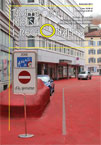 SITK RP
SITK RP 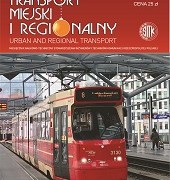
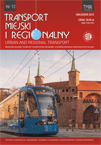 SITK RP
SITK RP 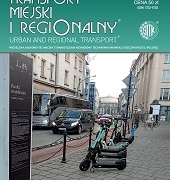 SITKRP
SITKRP 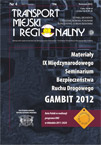 SITK RP
SITK RP 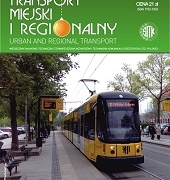

 SITK RP
SITK RP SITK RP
SITK RP